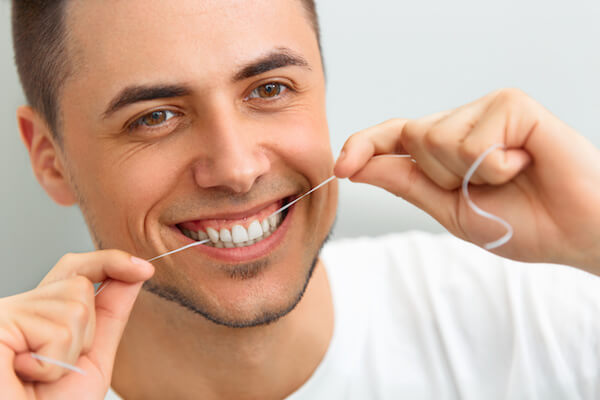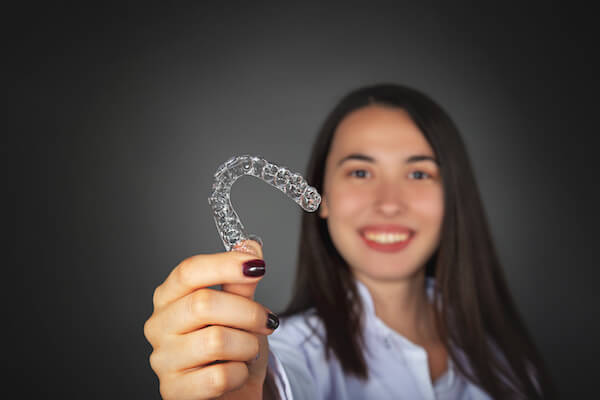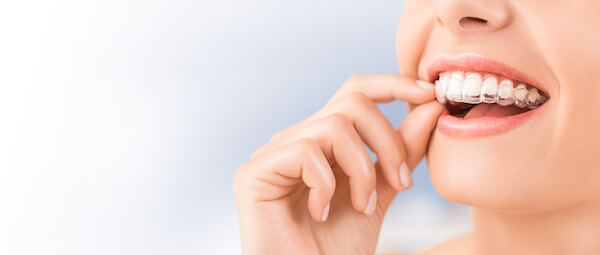How to Floss with Lingual Braces

Flossing when you have lingual braces or any type of traditional braces for that matter, is not easy. In fact, it is time consuming, difficult, and can be painful if not done properly. Unfortunately, if you want your orthodontic treatment to work, you need to floss and you will have to floss a lot.
Want to make it easier to floss with lingual braces? The tips and tricks we have provided may make it easier to floss when undergoing orthodontic treatment.
Use the Floss Threaders Provided by Dr. Valderrama
After Dr. Natalia Valderrama puts on your lingual braces, you will be given a small kit filled with dental supplies to take home. Inside that kit is a dental product known as a floss threader. This dental supply will be used multiples a day and will make it so much easier to floss.
Dental floss threaders help guide your floss into all those hard-to-reach places you will have when you wear braces. Without the use of a dental floss threader, you would spend considerable time trying to work the dental floss around all the wires and brackets in your mouth.
Never used a dental floss threader before? The following steps explain how to use one:
Create a long line of dental floss that is approximately 18 to 20 inches long
Take one end of the dental floss and thread it through the threader. Pull the floss through the threader until you have reached the five inch mark on the floss.
Gently guide the threader with the dental floss in it around any wire or bracket.
Gently remove the threader and continue to floss as you normally would.
Remove the dental floss when complete and repeat for each hard-to-reach section
Don’t Rush Through Flossing with Lingual Braces
No matter what you do, whether you use a floss threader or you just floss regularly, do not rush through the flossing process. If you rush through flossing you could bend or break the wires or brackets or even damage your teeth. Make sure you leave enough time to floss your teeth without rushing through it.
Brushing is Just as Important as Flossing
Flossing is just one of the things you need to do to keep your teeth and gums healthy while wearing lingual braces. You will also need to frequently brush your teeth.
It is recommended that you brush your teeth after each meal and when you are done snacking. It may sound excessive, but food can easily get stuck in the wires and brackets. Brushing your teeth after every meal helps remove food particles and plaque. If left on the teeth, the food particles and plaque can cause you to develop a number of dental problems that include tooth decay and gum disease.
Brushing, just like flossing, is going to be more time consuming when you have braces. The following steps explain how to properly brush if you have lingual braces:
Hold the toothbrush at a 45-degree angle to the gum line
Move the toothbrush in straight motions that go back and forward
Move the toothbrush over every surface of the teeth – back, front, and tops
Work the tip of the toothbrush into the back of your teeth so you can remove any plaque that is stuck to the back of your teeth
Don’t brush too hard as you could damage your teeth and gums or detach your braces from your teeth.
Don’t forget to brush your tongue. When you brush your tongue, you remove harmful bacteria from the mouth. If the bacteria was left in your mouth, it could spread to the teeth and cause cavities and tooth decay.
Have questions about how to properly brush and floss when you have lingual braces? Let Valderrama Orthodontics help you. Our friendly office staff will gladly answer any questions you may have about how to properly brush and floss while wearing braces. Feel free to call our office if you have any questions. We will do our best to answer them for you. If you still have questions, we can show you how to properly brush and floss during your next scheduled appointment.











Let's Get Social